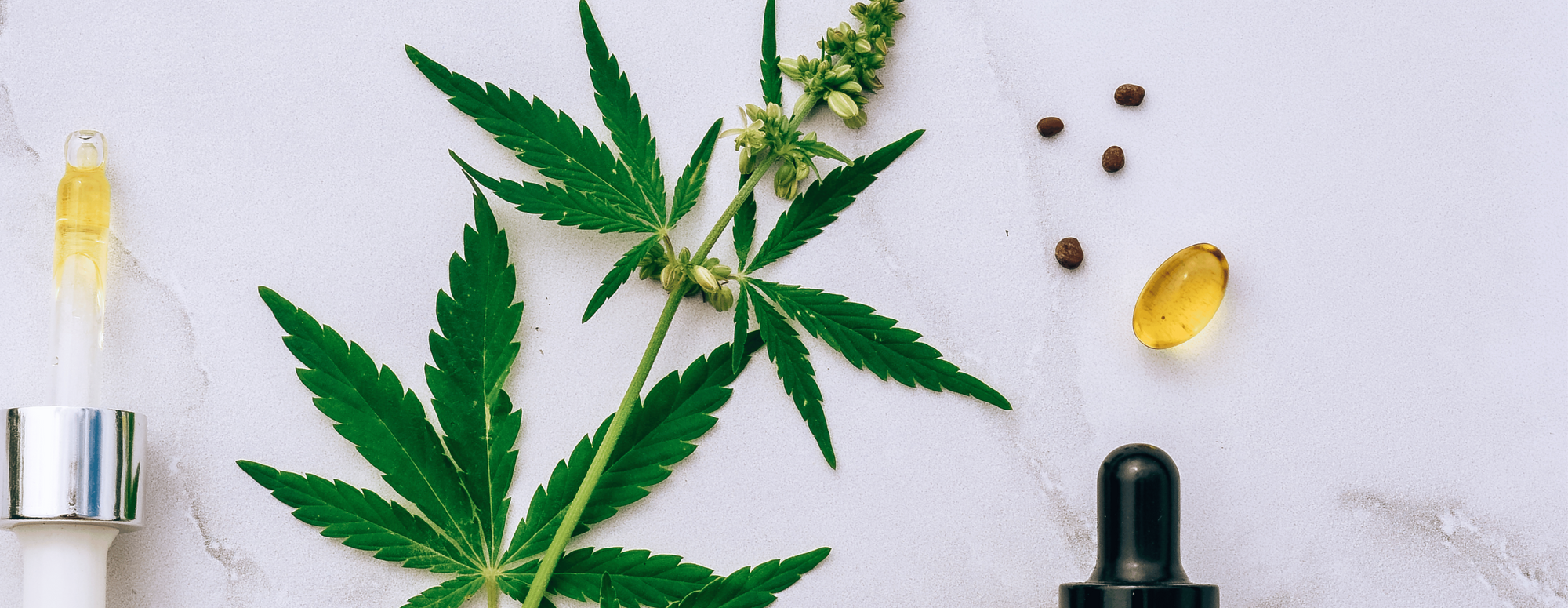Marijuana & Breastfeeding
It might seem logical to assume that a plant boasting remarkable health benefits like cannabis would be deemed safe, right?

Marijuana & Breastfeeding

With the rise of the cannabis industry, recreational and medicinal use of cannabis has become less stigmatized. There has been a notable uprise in the usage of marijuana among breastfeeding individuals in recent times.
Cannabis contains two particularly significant compounds: (THC) and (CBD). CBD does not have psychoactive effects and doesn't induce a "high" such as THC. It might seem logical to assume that a plant boasting remarkable health benefits like cannabis would be deemed safe, right?
Regrettably, for those hoping for a definitive answer, the current knowledge isn't adequate enough to give a straightforward response to parents. So, in the meantime, we strive to expand our understanding of cannabis consumption during breastfeeding. Here are the facts and research papers that we do have...

Is It Transferred to Breast Milk?
Determining the amount that is transferred to the milk differs significantly among individuals. Both CBD and THC have been found in breast milk after use.
The American Academy of Pediatrics (AAP) notes on cannabis use while breastfeeding that the substance has a lengthy half-life. The way cannabis behaves in the body depends on methods of consumption, such as smoking versus ingestion, and can generally be detected in body fluids from 1 day - 1 month after use, and in hair for a few months.
So, the answer is yes, THC does pass into human milk. Since it's deposited in the milk's fat, it remains in the body, and in breast milk, much longer than non-fat soluble substances.
The Half-Life
The 'half-life' is the duration it takes for a substance to exit the system. Unlike a glass of wine that typically leaves your system or blood within 2-3 hours, marijuana or cannabis takes a significantly more extended period to begin exiting the system — typically around 2-3 days.

The Risks
Considerations like the baby's weight, birth history, NICU stay, and current and past development are important considerations.
Astley and Little's research in 1990 hinted that if infants were exposed to THC via breast milk in their initial month, it could potentially lead to diminished motor development by their first birthday.
There have been no comprehensive studies exploring the long-term effects on neurodevelopment. Other documented impacts following infant exposure to THC through breast milk include lethargy, reduced feeding frequency, and short feeding durations. It's also worth noting that a mother's capacity to breastfeed and provide care for her child may be hampered, as marijuana has the potential to influence mood and judgment.
Different View Points
Something to Be Aware Of - When Child Investigative Services Involved
Is It Safe To Use Cannabis When Pregnant or Breastfeeding?
Strong Depression Meds Vs. Marijuana
If cannabis enables parents to soothe and restore balance during a strenuous time, it can potentially be a vital sanity-preserving tool for many. Many individuals prefer not to resort to prescription drugs to cope with their depression, opting instead for more holistic solutions.
Cannabis assists numerous parents in unwinding, managing their stress, and fostering a sense of well-being when postpartum blues threaten to surface.
Considering the minimal amount that actually transfers into the milk, when compared to other strong depression meds, many individuals believe that the benefits heavily outweigh the risks.
What Does the Research Say?
Dr. Chambers from the University of California, San Diego, and her associates executed an extensive study. They collected 54 milk samples from 50 ladies who self-reported varying degrees of marijuana use, from daily to occasional. THC presence was identified in 63% of the samples, extending up to six days following the mothers' last known usage. The THC levels were relatively low; however, it remained uncertain if these traces could potentially influence a newborn's health.
Available evidence suggests that THC, ranging from minor to moderate quantities, can be secreted into breast milk, where it tends to accumulate. Dr. Thomas Hale pointed out that breast milk from heavy users exhibited a THC concentration eight times greater than that in the mother's blood plasma. Yet, it was assessed that the amount in the infant's system was too insignificant to cause substantial side effects.
A recent intriguing study by the American Academy of Pediatrics suggests that breast milk containing THC may not pose risks to preterm infants.
In a different research conducted by Tennes and colleagues in 1985, they compared 27 infants who were breastfed and exposed to cannabis with 35 similarly breastfed infants who were not exposed. At the one-year mark, there were no discernible differences in motor and mental development between the two groups, as per the Bayley Scales of Infant Development. Nonetheless, the validity of the statistical analysis was restricted due to the limited size of the study sample.

The Tushbaby Hip Carrier
With its ergonomic design and comfortable waistband, Tushbaby provides optimal support for you and your baby. Say goodbye to shoulder and back pain from traditional carriers, as Tushbaby evenly distributes your baby's weight, relieving strain and promoting better posture.
Other Reasons For Consumption
A large number of parents turn to cannabis for diverse issues such as health and fertility, and even PTSD arising from birth-related trauma.
There are ongoing conversations about the potential use of THC-infused tampons for conditions such as fibroids, severe endometriosis, or other forms of reproductive discomfort. Some parents even provide doctor-prescribed cannabis to their children who are suffering from seizure disorders.
The intake of cannabis can potentially aid those who have difficulties maintaining a sufficient caloric intake required for a full milk supply. Specific types of marijuana can enhance appetite, thereby facilitating the production of breast milk via steady caloric consumption.
Conclusion
Marijuana usage during lactation is a complex one that warrants increased attention, particularly given the upsurge in the recreational and medicinal use of cannabis. The anecdotal evidence, coupled with burgeoning research, suggests potential benefits that may outweigh the risks. Yet, there remains a lack of definitive guidance due to legal and regulatory complications.
While we acknowledge the presence of THC in breast milk, the ramifications for the infant remain uncertain, with studies showing mixed results. Also worth considering is the role cannabis plays in offering a holistic alternative to prescribed medication for stress, depression, or anxiety.
It's evident that further research is crucial to fully understand the implications of cannabis use during lactation and to provide parents with the most accurate and comprehensive information to make informed decisions. Moreover, we must strive for an open and destigmatized conversation surrounding this topic to ensure the well-being of both the parent and the child.
References
https://www.ncbi.nlm.nih.gov/pmc/articles/PMC1472960/
https://www.sciencedaily.com/releases/2021/10/211008083531.htm
https://www.healthline.com/health/how-long-does-weed-stay-in-your-system
